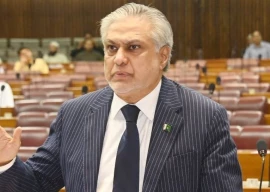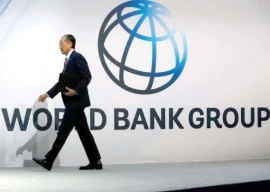
Experts at a recent conference predicted that Pakistan’s gross domestic product (GDP) growth in FY 2024 will be 3.61% as the current account seems to be recovering from its deep deficit, albeit import controls, that need to be better targeted.
If this is sustained, it will spark a movement towards equilibrium in exchange rates, thereby lowering inflation.
On the other hand, supply shocks to agriculture and industry should turn into more robust growth. Crucially assuming continuation of the stringent monetary and fiscal policies adopted during FY23 well into FY24 and beyond into the government’s medium-term economic framework, the GDP growth for FY24 will be 3.61%.
The two-day conference titled “Managing Pakistan’s Economy” was organised by the Lahore School of Economics (LSE). The goal of the conference was not just to discuss the context of economic issues in Pakistan, but also to discuss and lay the foundation for long-term sustainable economic growth.
In his inaugural remarks, LSE Rector Dr Shahid Chaudhry expressed that the current difficult economic situation emanated largely due to Covid-19 and the Ukraine war starting in 2022.
“The economy is now stabilising, after almost no growth in 2022-23; it is likely to resume modest growth in 2023-24.”
Dr Rashid Amjad, Professor and Director of the Graduate Institute of Development Studies at LSE, and Almazia Shahzad analysed the post-2019 shifts towards a market-driven exchange rate.
They found that while the exchange rate may have been overvalued in the past, this has been reversed recently which should make exports more competitive. They recommended managing Pakistan’s market-determined exchange rate regime through building up and maintaining adequate reserves.
LSE Dean and Professor of Economics Dr Azam Chaudhry estimated capital flight from Pakistan using data from the balance of payments and the level of trade.
“In the last 10 years, capital flight has reached significant levels, reaching almost $5 billion,” he said.
He added that capital flight is extremely sensitive to economic conditions, which means that sustained economic growth will tempt capital to return. “If Pakistani economy can rebound quickly to a 4-5% growth rate, it is estimated that at least $5.5-6 billion of capital can flow back annually.”
LSE’s Dr Nida Jamil examined the impact of China lowering tariffs on Pakistani products, allowing them greater access to the Chinese markets under the Pakistan-China Free Trade Agreement (FTA) signed in 2006.
She said that the greatest impact was on the lowest value-added segments and that market access led to Pakistani exporters shifting from higher-value to lower-value exports.
Jamil added that the productivity of textile exporters fell and that they failed to invest in capital.
She went on to highlight the need for a coordinated strategy when pursuing trade agreements, which will allow Pakistani exporters to produce and export higher value-added goods.
Published in The Express Tribune, May 3rd, 2023.
Like Business on Facebook, follow @TribuneBiz on Twitter to stay informed and join in the conversation.




1731975305-0/Untitled-design-(40)1731975305-0-165x106.webp)
1731975060-0/Untitled-design-(39)1731975060-0-165x106.webp)












COMMENTS (1)
Comments are moderated and generally will be posted if they are on-topic and not abusive.
For more information, please see our Comments FAQ